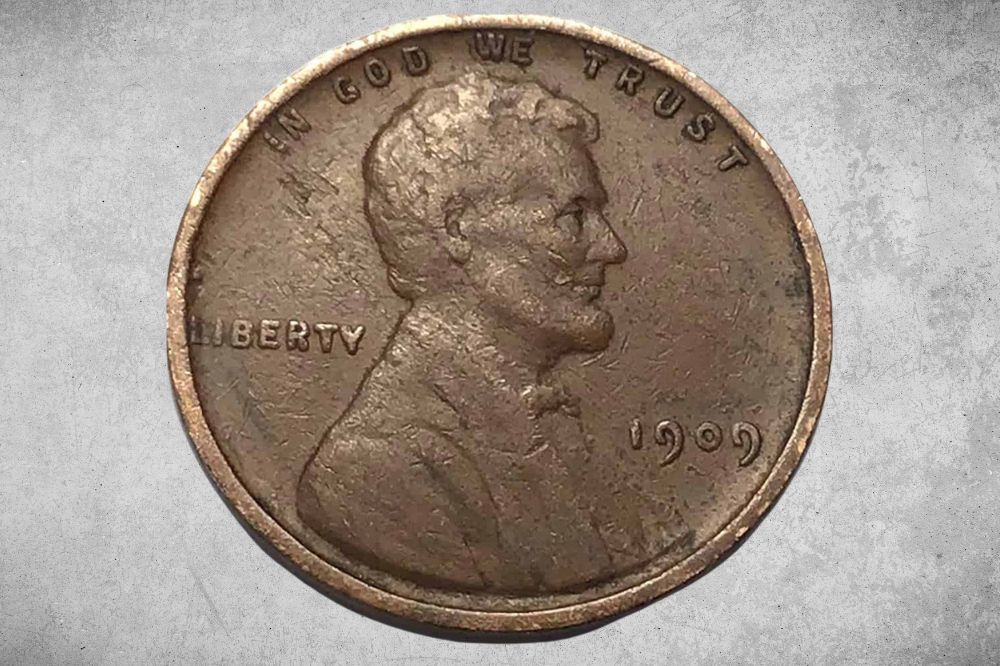How valuable can a coin minted over a century ago be? It’s easy to wonder about this since the value of a coin is often associated with its age, popularity and condition. But the 1909 Wheat Penny has survived through the years and proven to be worth quite considerably, so much so that it is sought after among many collectors.
The coin is still a classic, even though it was the first mint of the Lincoln Wheat cent. In this article, we’ll discuss the value and worth of this coin.
1909 Wheat Penny Details
- Category: Lincoln Wheat cent
- Mints: Philadelphia and San Francisco
- Total Mintage: 102,713,618
- Face value: One cent ($0.01)
- Observe designer: Victor D Brenner
- Reverse designer: Victor D Brenner
- Edge: Plain
- Shape: Round
- Diameter: 19.05 millimetres
- Weight: 3.11 grams
- Composition: 95% Copper, 2.5% Tin and 2.5% Zinc
1909 Wheat Penny Value Chart
| Mint | Good | Fine | Extra fine | Uncirculated |
| 1909 Lincoln Wheat Penny | $1.03 | $1.94 | $8.00 | $9 |
| 1909-VDB Lincoln Wheat Penny | $3.89 | $6.38 | $9.50 | $15 |
| 1909 S Lincoln Wheat Penny | $55 | $79 | $106 | $183 |
| 1909 S-VDB Lincoln Wheat Penny | $525 | $678 | $940 | $1,283 |
1909 Wheat Penny Value and Varieties
1909-VDB Lincoln Wheat Penny
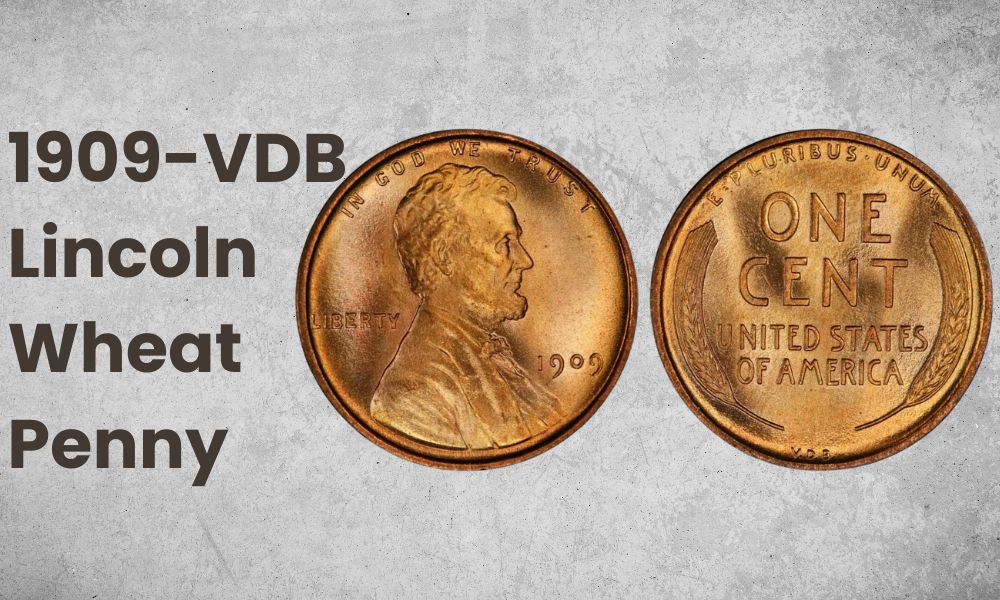
- Category: Lincoln Wheat Cent
- Mint: Philadelphia
- Mint mark: No mint mark
- Total Mintage: 27,702,000
- Face value: One cent ($0.01)
- Designer: Victor D Brenner
- Edge: Plain
- Shape: Round
- Diameter: 19.05 millimetres
- Weight: 3.11 grams
- Composition: 95% Copper, 2.5% Tin and 2.5% Zinc
The 1909 penny had four variations, and the first minting was the 1909 VDB Lincoln Wheat Penny in Philadelphia. The first set of these coins minted had the designer’s initials, Victor D. Brenner, with no mint mark. The coin had a significantly high level of mintage, almost reaching 28 million before it was stopped due to the criticism of the “VDB” tag on its reverse. Ironically, this coin is priced over the variant with no VDB tag because of this unique feature and the fact that it (1909-VDB) is less popular than the other.
A reasonably good 1909 will range between $4 and $7, while those in uncirculated condition are about $15. However, this coin may be worth more on auction or open markets.
1909 S-VDB Lincoln Wheat Penny
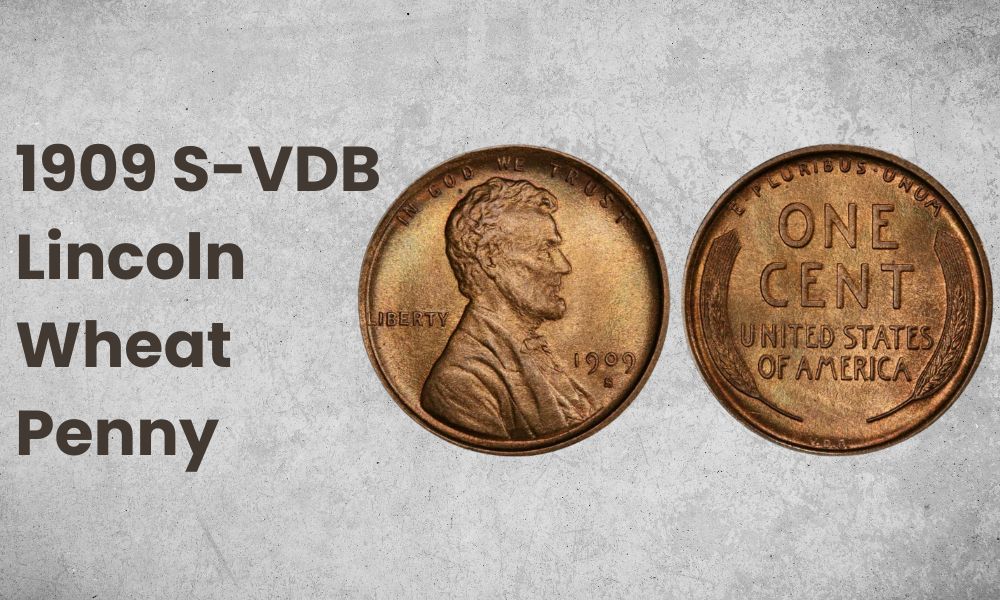
- Category: Lincoln Wheat cent
- Mint: San Francisco
- Mint mark: S
- Total Mintage: 434,000
- Face value: One cent ($0.01)
- Designer: Victor D Brenner
- Edge: Plain
- Shape: Round
- Diameter: 19.05 millimetres
- Weight: 3.11 grams
- Composition: 95% Copper, 2.5% Tin, and 2.5% Zinc
These were the first Lincoln pennies minted in San Francisco and are easily identifiable by the VDB written on its reverse and the S mint mark below the date on the obverse. It had the lowest mintage in this year’s coin series and, as such, is the rarest and most valuable of the four variations. The low mintage in the San Francisco mint is attributed to its limited capacity, so only 484 thousand were produced before the VDB sign on it was revoked.
This coin is regarded as a critical date, one of the most valuable of the Lincoln Wheat Penny and the most expensive 1909 S-VDB Lincoln penny. Also, out of the total mintage, only about 20,000 coins survived, making the coin less popular. However, these coins’ cost still depends on their grade and condition. On average, the 1909 S-VDB can cost $500 to $800, while in uncirculated condition, the coin is worth between $1000 and $2500. Therefore, it is eye candy to collectors and is highly sought after.
1909 Lincoln Wheat Penny
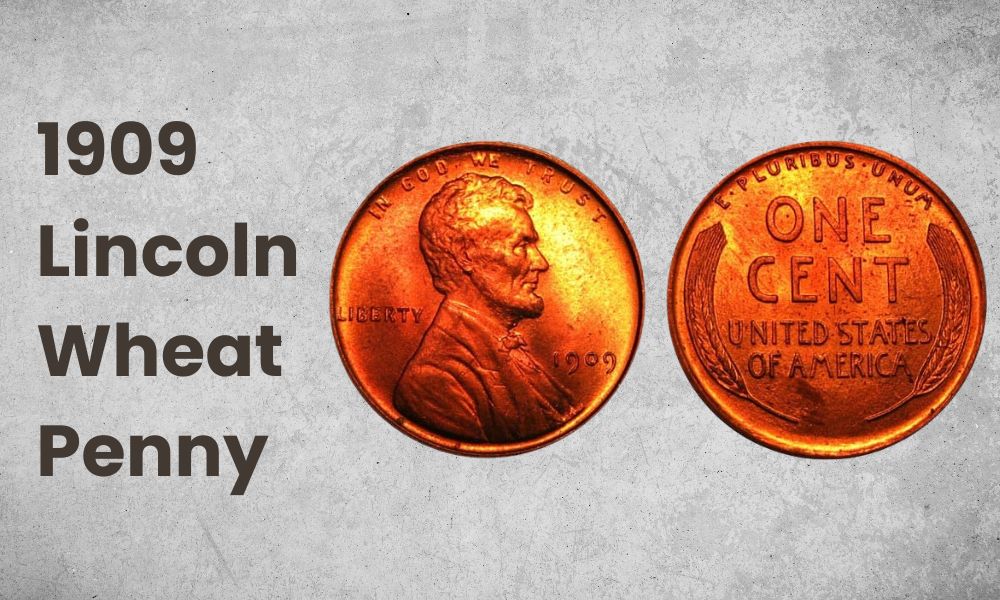
- Category: Lincoln Wheat cent
- Mint: Philadelphia
- Mint mark: No mint mark
- Total Mintage: 72,702,618
- Face value: One cent ($0.01)
- Designer: Victor D Brenner
- Edge: Plain
- Shape: Round
- Diameter: 19.05 millimetres
- Weight: 3.11 grams
- Composition: 95% Copper, 2.5% Tin and 2.5% Zinc
After the full initials of the designer, VDB, was inscribed on the initial set of 1909 Lincoln pennies, several backlashes caused the coin’s mintage to be stopped and the initial removed. After this, the mint was resumed in the same year, and Philadelphia produced over 72 million coins, marking one of the highest mintages in the Wheat penny series. Because of this, the coin became extremely popular.
Many of these coins were saved, so they are still grossly in circulation. However, they are the least valuable of the 1909 Wheat pennies and will only cost about $10 in their uncirculated state, though this still depends on the grade of such a coin.
1909 S Lincoln Wheat Penny
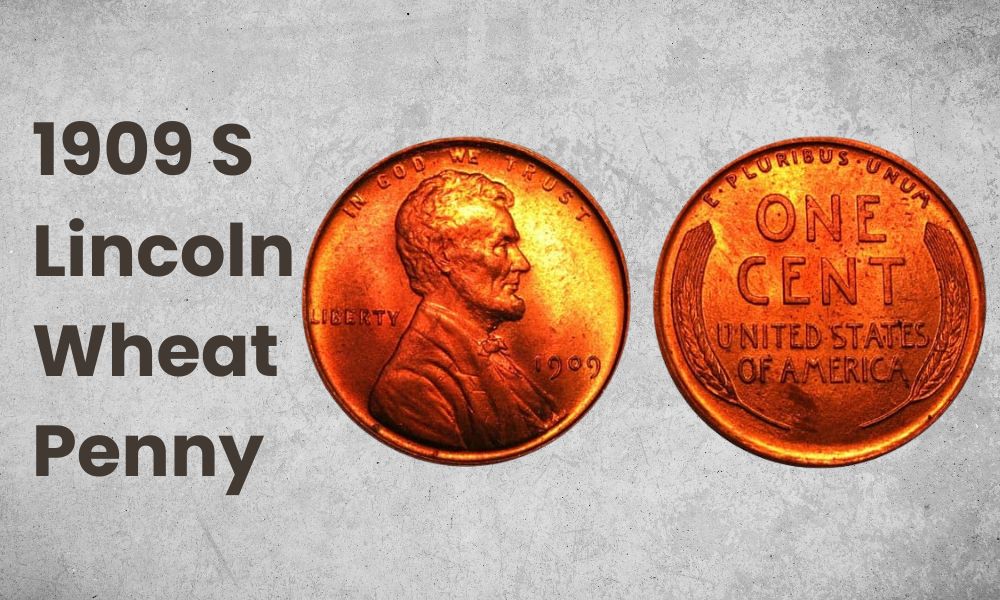
- Category: Lincoln Wheat cent
- Mint: San Francisco
- Mint mark: S
- Total Mintage: 1,825,000
- Face value: One cent ($0.01)
- Designer: Victor D Brenner
- Edge: Plain
- Shape: Round
- Diameter: 19.05 millimetres
- Weight: 3.11 grams
- Composition: 95% Copper, 2.5% Tin and 2.5% Zinc
The fourth variant of the 1909 Lincoln penny is the 1909-S which was minted after removing the VDB initials. Only 1,825,000 coins could be produced before the end of the year, unlike the Philadelphia mint, which had almost 73 million coins. However, because of this low mintage and its rarity, the coin is considered more valuable than its variant. It costs up to $200 in its uncirculated condition and between $55 and $80 in average condition. The coin is easily identifiable by the mint mark, S; unlike the 1909-VDB, it doesn’t have the VDB initials.
History of the 1909 Wheat Penny
The 1909 Lincoln Wheat Penny is the highest-minted coin of the Lincoln Wheat Cent. It was a product of celebrating the centennial of the late President Abraham Lincoln’s birth and the quest of certain citizens having written the Treasury department suggesting a Lincoln coin. President Theodore Roosevelt, in honour of the late president, heeded this and engaged sculptor Victor David Brenner to design the coin in 1908. This was the first circulating coin to have the portrait of a person, as opposed to the earlier numismatic tradition that involved personifications.
Victor David Brenner’s design of Lincoln is similar to some other works. For instance, the desk plaque he designed in 1907 for Gorham Manufacturing, an 1864 portrait of Lincoln and a photograph of Lincoln and his son. The coin’s reverse includes Lincoln’s image facing right, the motto, “IN GOD WE TRUST” right above his head, the word “LIBERTY” by his left, the mint date “1906” on his right, and the mint mark, “S” or no mint mark beneath the date. After much deliberation, this design was approved by the new president Taft after Roosevelt’s death.
The coin’s obverse has the image of two ears of wheat on both sides along the edge of the coin with the coin’s value, “ONE CENT”, the “UNITED STATES OF AMERICA” underneath it and the Latin phrase, “E PLURIBUS UNUM” above along the top rim of the coin. Brenner initially submitted the coin’s design with his full name on the obverse but changed it to his initials on the reverse after Leach objected to it. Also, the coin’s reverse had earlier been designed featuring a tree branch which was rejected by Leach, who asked for a simple design, thus, the current wheat design.
The coin had the public’s interest, and there was a lot of speculation about its design. So after the production of over 27 million coins in Philadelphia and 400,000 in San Francisco, the coin received much opposition because the designer’s initials were included on the coin’s reverse. There were opinions and queries that the initials made the coin illegal as it was considered advertising. Due to these reports, Secretary MacVeagh ordered the suspension of the cent’s coinage until the coin can be minted with a discreet “B” for Brenner in place of the initials. However, upon considering the time it would take to strike the coin with the “B” initial on the coin, it was decided that the coin would be struck with no initial. Although Brenner protested against removing his initials, this was not heeded, and the cent without the initials was released in August 1909. However, the initials were included in the coin’s design in 1918.
1909 Wheat Penny Grading
Like every other coin, the value of a coin is determined by its grade, which includes the coin’s condition, popularity, and circulation. The numismatic community grade coins from poor to mint state and use certain adjectives to qualify their grade. Before you purchase or sell a coin, it’s essential to understand how grading works to know the coin’s total value. Here’s how coins are graded:
- Uncirculated: coins in this grade are considered of top value because they have no wear and have not been circulated. Therefore, all the coin details, including Lincoln’s hair curls and other letterings, are visible.
- Extra fine: this coin has incurred minor wear though it might not be noticeable if you don’t look closely. You may notice some curls flattening and blending with the forehead. But, this coin is still in an excellent state with most of its details in place.
- Fine: the coin has worn, and significant hair curls have blended into the forehead and ear. The details on the coin are scarcely visible as they are smoothened, including some of the letters. However, the coin is still identifiable and sharp.
- Good: this coin has incurred a heavy amount of wear, and the elements of the coin have flattened. The coin has lost its shine, and only an outline of Lincoln is visible.
See this video for the 1909 Lincoln Wheat Penny varieties and grades that are worth the money.
1909 Wheat Penny Errors
Although the US mint ensures that coins are in their perfect state, specific errors are inevitable. And these error coins are considered unique and more valuable than other coins. However, you must be careful not to buy fake coins as these coins are often counterfeited. Here are some 1909 Wheat Penny error coins.
1. VDB Doubled Die Obverse (DDO) Error
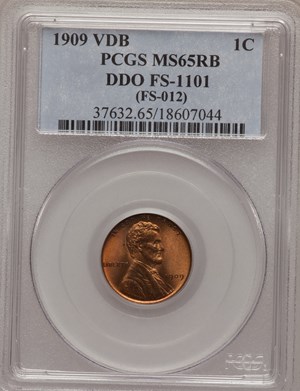
This occurs when the die used to make the obverse is damaged, and the die moves between strikes, causing details to double. It can also result from the planchet moving while the coin is struck. This error coin is sold for $1000 in MS 65 RD, and in 2019, it was sold at an auction for $24,150.
2. Die Chip/ Doubled Die Error
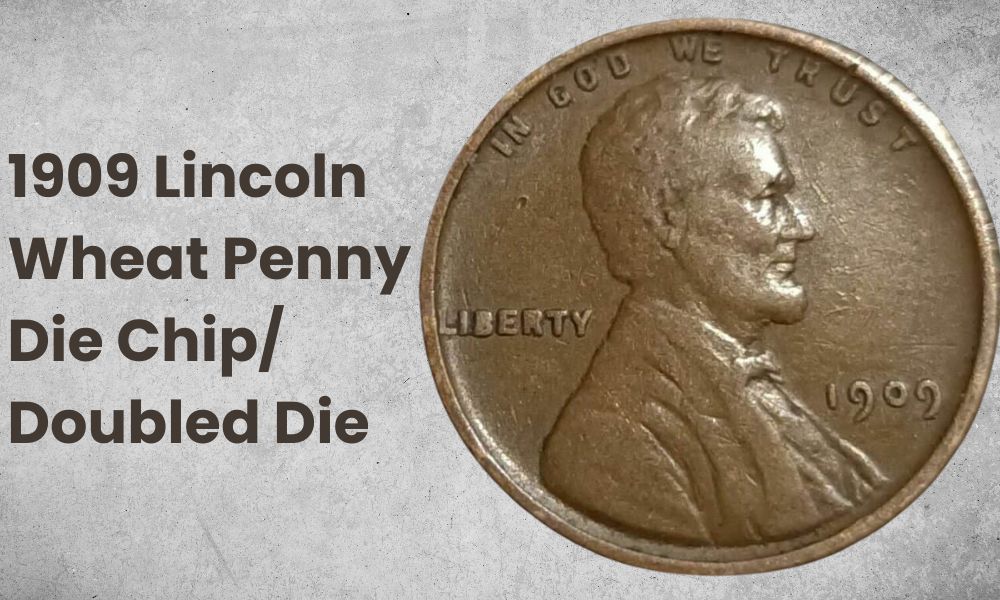
This coin has a doubling effect, which means the die is struck twice while minting. However, there are variants of this coin with die chips in the B and R of “LIBERTY”. This coin error is worth about $9,600 in MS 67.
3. Off-centre Doubling Error
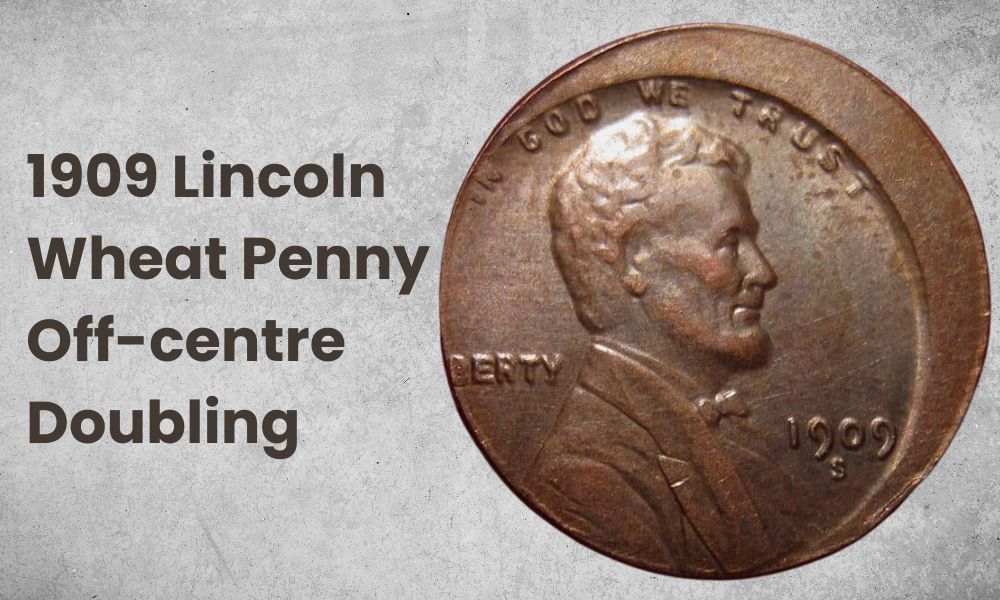
Since DDOs are the most common types of 1909 Wheat Penny errors, there are specific subclasses, including this error where the coin doubles off-centre: the planchet moved between striking, and the coin was struck at one side and doubled. In 2018, this coin was sold for $12,000 in MS 67 RD.
See this video to find 1909 Wheat pennies that are extremely valuable.
FAQs
1. Why is the 1909 S VDB Penny Rare?
The San Francisco mint could only produce 484,000 coins due to the mint capacity; today, only about 20,000 still exist. So this made the coin scarcely available and highly sought among collectors.
2. How Can You Tell If You Have A 1909 VDB Penny?
All VDB pennies have the initial written on the coin’s reverse near the rim. You must also beware of counterfeit coins and confirm clearly before purchasing a coin.
3. What Is A 1909 Penny Made Of?
The coin has a metal composition of 95% copper, 2.5% tin, and 2.5% zinc. It weighs 2.11g with a 19mm diameter and a smooth edge.
Conclusion
The 1909 Wheat Penny is a classic coin and highly collectable even though it was minted over a century ago. The coin’s value depends on its variation, condition, and grade, but overall, it is one of the most valuable Wheat pennies and highly desired in its especially VDB variation. Many collectors also look out for certain error coins worth even more to add to their collection. However, before purchasing this coin, it’s best to ensure its authenticity since it is one of the most counterfeited coins.
